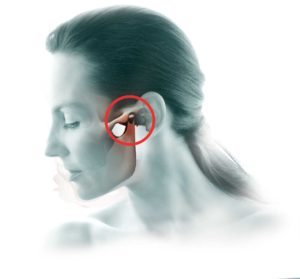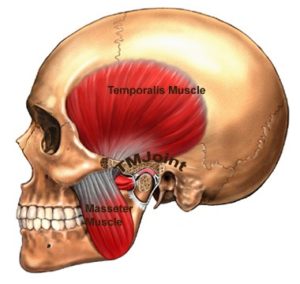 The jaw presents a unique opportunity in that it is both extremely powerful and highly accessible. Unlike the über-powerful hip joint, which is covered beneath layers of muscle, etc, the jaw is there for the taking, with little between it and me.
The jaw presents a unique opportunity in that it is both extremely powerful and highly accessible. Unlike the über-powerful hip joint, which is covered beneath layers of muscle, etc, the jaw is there for the taking, with little between it and me.
I started working with jaws in mid-80s at a chiropractor’s office where a large percentage of my patients had been in car accidents. I ended up seeing a lot of jaw cases because of the strong correlation between whiplash/neck injury and jaw dysfunction. As the jaw and neck muscles are working equal and opposite each other, injuries to the neck frequently result in injury to the jaw as well. Since that time I have seen hundreds of impact-related jaw cases.
A second type of case we see frequently at the clinic are those referred from dentists who had become concerned when a patient’s jaw didn’t open all the way or when it seemed to be tracking incorrectly.
The third type of jaw case we get at Dorfman Kinesiology is someone who has had a propensity for headaches. Certain categories of headaches will have jaw involvement, either primary or secondary or minor but it’s always taken into consideration. And the thing is, most people don’t know that their jaw is contributing to their imbalance, be it headaches or neck pain. Most people simply don’t realize how tight their jaw is, or understand the effects of this tightness.
TMD (which used to be called TMJ) is the medical name for disorders of the Temporomandibular joint. This is the hinge joint that connects the lower jaw (mandible) to the temporal bone of the skull, which is immediately in front of the ear on each side of your head. If you think of where your temples are and start to feel around that area you can feel where the jaw moves, that your TM joint. It’s significant because there’s a nerve that runs thru there called the Trigeminal nerve, which goes into your eyes, nose and ears. So when that trigeminal nerve gets aggravated you have a problem. It’s similar to the wrist’s carpal tunnel nerve in this manner. You may have the compression and the swelling without much pain, but once the nerve is involved it’s a whole different monster.
There are a number of key muscles that can be involved in jaw cases. The temporalis muscle, for example, covers the whole side of the head. The masseter muscle is the one we all can feel over the corners of the jaw. These two muscles are the most obvious ones and people often experience their headaches in one or the other. But then there are also the intangible muscles in the back of the jaw, called the pterygoids. Here 2 muscles cross each other and can be intimately accessed from inside the mouth. It is amazing to me to be able to go right inside the joint, contact the pterygoids directly and  witness how quickly the jaw frees up when a little pressure is applied. So yes, I work inside people’s mouths, and I teach them to do it for themselves as a form of self-massage.
witness how quickly the jaw frees up when a little pressure is applied. So yes, I work inside people’s mouths, and I teach them to do it for themselves as a form of self-massage.
The surprising thing with jaw cases is that it’s very easy to reorient the mechanics of the jaw. For a human to comprehend a reorientation of their jaw muscles is so much easier than understanding the basic movement in their ankle, or the knee, let alone the hip or pelvic girdle. There is no comparison.
One specific movement of the jaw, called retraction, often has to be retrained. In this situation the patient brings their jaw back significantly and opens it again and again and through the repetition of this movement they’re able to retrain their mechanics. The jaw is designed for an incredible amount of repetition and the solution for it to feel better is synchronistic with that design.
A similar issue is displacement of the jaw. In this situation the jaw swings off center. Yet like retraction, resolution can often be found quickly and easily through reorientation and repetition.
Then of course there is the matter of a clenching or grinding habit, which is the product of jaw tension. Grinding is back and forth like a saw, while clenching is biting down. In general, I have found that the clenching and grinding is a reflection of what’s going on during the day. The analogy I like to use is if you had a really bad day or experienced something traumatic, that night your sleep is going to be affected. In the same way I feel that much of what happens with the jaw when sleeping is a reflection of what happened during the day. If my jaw muscle are tight all day and then I go to sleep, they will stay tight. So, the key is being able to stop creating that daytime tension by relaxing the muscles, getting the biomechanics correct and doing self-massage on the pterygoids. (Our next blog will tell you how.) Once these things are in place the nighttime issues will begin to resolve.
If you are experiencing problems with your jaw Dorfman Kinesiology can help. Or, if you get frequent headaches or have issues with your neck, consider a consultation. We can quickly determine if there is jaw involvement and work together to resolve it. Relax, release and retrain the jaw and you will feel better forever.
